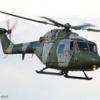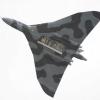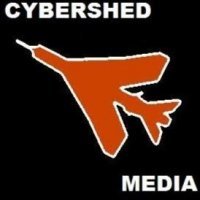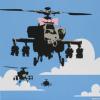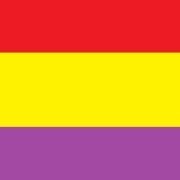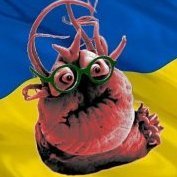Search the Community
Showing results for tags 'Stuka'.
-
Junkers Ju-87G-2 Stuka Trumpeter 1:32 History Even before the Battle of Stalingrad, German concern about the large quantity of Soviet mobile armour on the Eastern Front during 1942 resulted in the formation of an experimental air-to-ground anti-tank unit. Tests showed that arming the Junkers Ju87 Stuka with a 37mm cannon under each wing promised the optimal tank-busting weapon. This Ju87 variant was designated the Junkers Ju87G Kanonenvogel (cannon-bird). The Ju87G-2 was developed from the long-wing Ju87D-5 Stuka dive bomber. It was a rugged design powered by a single Junkers Jumo 211J-1 twelve-cylinder liquid-cooled engine. The type displayed outstanding qualities as a tool for precision ground attack. However, in the air the Ju87G-2 was both cumbersome and slow. Defensive armament was limited to 7.9 mm Mauser MG 81Z twin-mounted machine guns at the rear of the large glasshouse canopy. A total of 174 G-2s were built before production of all Ju 87 variants ceased in October 1944. The Ju87G began its career in February 1943 in the battles for the Kuban peninsula in Southern Russia. It was at this time that Oberstleutnant Hans-Ulrich Rudel began tank-busting operations, having recently become the first Luftwaffe pilot to fly 1000 operational missions. Later, in July 1943, Rudel took part in the epic tank battle for the Kursk salient. More than 350 Ju87's participated in these operations, including a handful of production Ju87Gs. Rudel went on to fly no fewer than 2,530 sorties and notched up a total of 2,000 targets destroyed; including 800 vehicles, 519 tanks, 150 artillery pieces, a destroyer, 2 cruisers, the Soviet battleship Marat, 70 landing craft, 4 armoured trains, several bridges and 9 aircraft. Given the shortcomings of the Ju87G in terms of its speed, agility and defensive capability this speaks volumes for the piloting skills of Rudel himself and the marksmanship of his rear gunners. Hans-Ulrich Rudel was the most decorated serviceman of all the fighting arms of the German forces. He was the only recipient of the Knight's Cross of the Iron Cross with Golden Oak Leaves, Swords, and Diamonds. Unswervingly dedicated to waging war against the enemies of the Third Reich, Rudel continued in active service following injuries sustained in February 1945 that resulted in a leg amputation. Such was his prowess and notoriety, that the Soviets placed a significant bounty on his head. Wisely deciding to evade capture at Russian hands, in a final act Rudel led three Ju87s and four Focke-Wulf FW 190s westward from Bohemia. He surrendered to U.S. forces, on 8 May 1945. The Model This is probably my favourite variant of the Stuka, what with the rakish lines of the canopy and the huge cannon in their winged pods, it just looks the business. So, it was with great news on hearing that Trumpeter where going to release one. The kit comes in one of Trumpeters standard top opening boxes with a very attractive piece of artwork on the front showing the aircraft in action over the Eastern Front. Inside there are fourteen sprues of medium grey styrene, two of clear, two small sheets of etched brass, three rubber tyres and the decal sheet. All the parts are well moulded with no sign of flash or other imperfections and only a few moulding pips, so cleaning up should be nice and easy once the parts are removed from the sprues. The kit comes with lots of lovely detail along with options for various weapons loads to be fitted in addition to the cannon pods. Construction begins with the assembly of the Junkers Jumo engine. This consists of the three piece engine block to which the sump, crankcase, propshaft, rocker covers, oil tank, exhaust and intake manifolds, coolant tank and the four part fuel unit. The rear of the engine is fitted with the auxiliary pack with ancillaries such as the generators, pulleys, fuel pump and turbo intake. Once the exhaust plates have been added the two engine bearers can be fitted. The completed engine is then attached to the firewall, along with four other fittings before the two halves of the cowling are fitted around the engine with the large radiator sandwiched between them. Since there are no loose panels you will see very little, if anything of the completed engine unless the modeller carries out a bit of surgery, which is a bit of a shame as it looks very nice. The front fuselage is completed with the addition of the radiator grille, exhausts and propeller, which is made up of the backplate, three separate blades, hub and spinner. This section can now be places to one side as construction moves to the cockpit. The nicely detailed cockpit consists of a single piece floor to which the pilots seat, (made up of three parts, six if you include the headrest and armour), gunners seat, (made up of three base supports and the seat itself), are fitted. The radio sets are fitted to the mid mounted dwarf bulkhead and fitted just forward of the gunners seat. Beneath the bulkhead mounted radios another set, made up from two parts is glued to the floor. Additional parts, such as the rudder bar, joystick, two oxygen regulators and the rear gun mount, with its two ammunition tanks, are also fitted. The cockpit sidewalls are fitted out with various control boxes, throttle quadrant and trim wheels before being glued to the cockpit floor, producing a nice sturdy tub. The completed cockpit is then sandwiched between the two fuselage halves, followed by the fitting of the rear cockpit panel, complete with clear circular cover and the pilots coaming, with added instrument panel and crash bar. At this point the horizontal tailplanes are fitted, along with the elevators, associated control horns and the end caps, followed by the rudder with separate tail light. The construction of the wings begins with the assembly of the centre section. The centre panel is fitted with the lower viewing tunnel with clear parts at each end, followed by the front and rear spars, and completed with the two upper panels. Each outer wing panel is fitted with a machine gun bay. Each bay consists of four parts into which the three part machine gun, complete with ammunition feed, is mounted and covered with the optionally posed door. Before gluing the upper and lower wing halves together, ensure you have opened the correct holes for the weapons option you have chosen. With the wings closed up they are finished off with the separate wing tips and navigation lights. At this point, the instructions call for the fitting of the cockpit windscreen and canopies. There is a choice of windscreen and pilots canopy depending on the model being built, along with a couple of panels that can be posed open or closed on the sliding section. The windscreen, no matter which type is fitted with two grab handles, a clinometer and aiming bar. The rearmost canopy is fitted with the twin machine gun mount, which comes with separate barrels and a two part hanger mechanism. The wing centre section is then glued to the fuselage, before being fitted with the two outer wing panels, followed by the front fuselage/engine section. On the undersides of the wings the prominent flaps are fitted to the trailing along with the actuator rods. There is no option to display them in drooped, unless surgery is carried out. Whilst the model is upside down the two radiators are glued into position along with their covers. The main undercarriage is also attached, each made up of a two part wheel, two part oleo all sandwiched between the two halves of the spats. The tailwheel comes as a four part sub-assembly, including the two part wheel, the oleo and yoke half. Now it’s on to the weaponry build. The main 37mm cannon are used in all options and consist of six part mount, including separate crutches, to which the cannon fairing is attached, followed by the barrel. Each of the two “wings” are made up from folded PE, which are then glued to the fairing sides. Each wing has two blocks of shells slid into them, although since you won’t be able to see much of them you could just display them separately. The completed cannon are then glued into position just outboard of the wheel spats. The other weapons included in the kit are the centre mounted 500kg bomb, made up form two halves with two parts to complete the fins, plus the separate fin cross members and the bomb cradle/swing arm. The mountings are the same for the twin 50kg bombs, (each bomb comes as four parts and can be fitted with optional fuse extenders), drop tanks, Each from two halves, four mounting bolts and a PE strap), or what I can only describe as a six barrelled machine gun pod, (with four parts to each pod, plus three twin barrels. There is also the option of mounting two sets of five smaller bombs all mounted on a single cradle, making up what could be construed as a cluster bomb. I wish Trumpeter would label what things were. With the various weapons loaded the build is complete. Decals The single decal sheet provides options for two aircraft, and comes complete with stencils for one. The decals are very nicely printed, with good colour density, in register and with very little in the way of carrier film, and what there is, is very thin. The Balkenkreuz do appear to have a bit of mottling on them as if they had stuck slightly to something. I would have thought that once on and covered in gloss/matt varnish this will disappear. The swastikas are each cut in half at the centre, and should cause too many problems when positioning them. The two aircraft options are:- Junkers Ju-87G-2, Stab/SG 2 <-+-, W.Nr. 484110 Junkers Ju-87G-2, Stab/SG 2 <-+-, W.Nr. 494193 Conclusion As I said above, this has to be my favourite version of the Ju-87, with perhaps the slightly odd looking Ju-87A being a close second. The kit does come with quite a lot of detail, and should build nicely straight out of the box, but there is quite a bit of room, particularly in the cockpit to add more, so it should appeal to those who like to take to the next level. It’s a bit of shame to have a well detailed engine covered up and not even have the option to show it off, but I’m sure the aftermarket companies will be all over this soon. Very highly recommended. Review sample courtesy of UK Distributors for
- 2 replies
-
- 1
-

-
- Pocketbond
- Stuka
-
(and 2 more)
Tagged with:
-
Ju 87B-2/R2 Upgrade sets & Masks 1:72 Eduard for Airfix Kit The new tool from Airfix is welcome. Eduard are now along with some sets for it. Get what you want for the areas you want to be more of a focal point. As usual with Eduard's Photo-Etch (PE) and Mask sets, they arrive in a flat resealable package, with a white backing card protecting the contents and the instructions that are sandwiched between. Update Set (73633) Two frets are included, one nickel plated and pre-painted, the other in bare brass. A complete set of new layered instrument panels that will be prominent within the cockpit are the primary parts on the painted set, with new rudder pedals; seat details; canopy internal structure; additional instruments; seat belts and extra details. The normal fret contains external details, bomb details, canopy frame parts and airframe parts. Zoom! Set (SS633) This set contains a reduced subset of the interior, namely the pre-painted parts that are used to improve on the main aspects of the cockpit, as seen above. Whatever your motivations for wanting this set, it provides a welcome boost to detail, without being concerned with the structural elements. Masks (CX513) Supplied on yellow kabuki tape, these pre-cut masks supply you with a full set of masks for the canopy. In addition you get a set of hub/tyre masks for the main and tail wheels, allowing you to cut the demarcation perfectly with little effort, plus a landing light mask. Review samples courtesy of
-
Guerrilla Nightmare Luftwaffe Stukas at War Against Tito's Partisans in Yugoslavia 1941-1945 ISBN : 9788365437785 Kagero & Company via Casemate UK The Ju-87 Stuka was conceived as a dive bomber in the early 1930s and proved itself in the Spanish Civil war, then later in the Blitzkrieg in Western Europe. However the Battle of Britain would show that the aircraft was vulnerable to the more modern fighters of that time. As such it was moved to areas when the Luftwaffe had less or no aerial opposition. One of these such areas was the Balkans. The Germans were fighting a bitter campaign against Tito in the area, and for lightly armed partisan fighters with no air cover and only light AA the aircraft was truly a nightmare. The aircraft was accurate in delivery of its bomb load and due to its ruggedness could literally be based any where, typically operating from improvised airfields. Despite Allied air operations over the Balkans the Stuka was used right up until the end of hostilities, with one aircraft even being captured and used by the partisans against the Germans. The book looks at all aspects of the operation of Stukas over the Balkans from Supporting ground operations, anti-shipping duties, basing of units; and even towing of Parachute unit gliders. The book is A4 Hardback and 149 pages long. It is illustrated throughout with black and white photographs. At the back are ten pages of colour plates showing profiles of the aircraft involved. Conclusion This publication brings the story of Stuka in one of the lesser remembered fronts of WWII into the fore. The research shows through and we have a book which is well written, plus loaded with photographs which brings the text to life. Highly recommended to the WWII history buff and the aviation modeller alike. Review sample courtesy of
-
Hello All, I havent posted for a while, but thought my current build may be of interest. I usually model in 1/32 scale and usually Wingnut Wings, but having just read a great book on the Battle of Britain (The Last of the Few by Max Arthur) I’m hooked - I had a sudden urge to start a collection of BoB aircraft. My models usually go in a box in the garage never to be seen again, but if I stuck to the smaller 1/72 scale.. who knows, they may even see the light of day at home... To get me started I went for the Airfix new tool Stuka - and what a gem it is! Nothing like the Airfix kits I made back in the day. The detail in 1/72 is nothing less than incredible; worthy of a 1/32 scale kit. I still couldn’t resist getting the Eduard PE set though as this is the icing on the cake. I’ve made a start and have just about finished the interior. The gunner’s seat was drilled out to represent the ‘cage’ like construction (moulded as a solid piece in the kit). Painting was a light mist of black primer followed by Vallejo German Grey, then highlighted and a fine pin wash to accentuate depth, ending up with a flat varnish to tone down the Steel PE parts which are a tad too bright otherwise. Just one note using the Eduard PE - take care over fitting of the instrument panel - if it overlaps anywhere by the smallest margin it will affect the fuselage fit... I cant wait to get started on Airfix’s other BoB offerings already.... Thanks for looking in Guy
- 29 replies
-
- 32
-

-
Had a rather discouraging last minute mishap with an IAR and a very displeasing varnish finish, so have been lying low with a few very quick booster builds... This is my attempt at getting back on it. I am planning on building this fairly quickly, and essentially out of the box. It's for a mate, who wants it for his son's ceiling - feels a somewhat intimidating presence for an infant - but who am I to argue. I find it's easier to make a good job of builds when they are for others. Stops me having a tantrum and chucking them in my 'corner of rejection'. Sods law - this will go sideways now. I haven't built an Italeri kit in ages, but looking in the box, and at some online reviews it seems a lovely looking proposition. The parts look great, good detail, no flash, and nice instructions with a coloured paint guide. I have ordered a mask set for the canopy, and will likely add some visuals with extra wires and so on in the cockpit. I want to build this with the spats removed, just for a change. And I plan to build it with the engine exposed for the same reason. And I like the inclusion of what looks like a weld-seam on the exposed version.... I toyed with buying aftermarket barrels for the canon - but will see how I fair with the ones provided. Not totally certain at this stage what finish I am aiming for - tempted by the hairspray / weathered winter whitewash after some recent success with that, but it's starting to feel like a bit of a get out in terms of being overly forgiving to my camo-work. I will see what the Stuka-loving father fancies... Thanks for looking. Any heads ups on potential issues with this kit would be appreciated. Bruce NB - the defective IAR for context... though the ugly mottling on the last layer of varnish doesn't show up too badly in this pic.
- 22 replies
-
- 2
-

-
Ju.87B-2/R-2 Updates & Masks (for Airfix) 1:48 Eduard Airfix are expanding their range of new tool Stukas with the B-2/R2, an incremental improvement on the B-1, and a longer range, more rugged variant of the B-2 respectively. Eduard's new range of sets are here to improve on the kit detail in the usual modular manner. Get what you want for the areas you want to be more of a focal point. As usual with Eduard's Photo-Etch (PE) and Mask sets, they arrive in a flat resealable package, with a white backing card protecting the contents and the instructions that are sandwiched between. Upgrade set (49894) Two frets are included, one nickel plated and pre-painted, the other in bare brass. A complete set of new layered instrument panels and sidewall details including ammo can faces are the primary parts on the painted set, with new rudder pedals; radio boxes; framework between cockpits; canopy internal structure, bomb fin stabilisers; bomb shackle details; lower window; gun bay detail, and trim-tab actuators for the tail also supplied. Zoom! Set (FE894) This set contains a reduced subset of the interior, namely the pre-painted parts that are used to improve on the main aspects of the cockpit, as seen above. Whatever your motivations for wanting this set, it provides a welcome boost to detail, without being concerned with the structural elements. Seatbelts STEEL (FE895) In case you don't already know, these belts are Photo-Etch (PE) steel, and because of their strength they can be etched from thinner material, which improves realism and flexibility in one sitting. Coupled with the new painting method that adds perceived extra depth to the buckles and other furniture by shading, they are more realistic looking and will drape better than regular brass PE. As well as the pilot's four-point harness, you also get a set of lap belts for the rear gunner, and the simple leather strap back to his seat, plus the brackets that hold it in place. Masks (EX589) Supplied on a sheet of yellow kabuki tape, these pre-cut masks supply you with a full set of masks for the canopy, but also give you another set of canopy masks tailored to fit the interior of the glazing so that you can paint the interior and give your model that extra bit of realism, which is especially useful if you have the detail set above, which includes additional parts to the inside of the canopy. As a bonus, you also get a set of wheel masks for the main and tail wheels to ease your way through the hub/tyre demarcation process. Review sample courtesy of
-
My first work in progress in which I’ll be using Vallejo Model Air paints that I’ve just switched over to. For this I’ve plucked the Airfix Stuka from the stash. I’ve never built a Stuka before, so I’m really looking forward to this one. The kit kit seems well up to the usual standards Airfix are setting with their new release kits. There’s no flash, and all the mouldings seem very clean and crisp. The clear sprue also seems very impressive. I’m going to build this straight out of the box, a nice quick build while another kit is on hold waiting for the right paint to arrive.
-
Hello All! Happy holidays and all the best in the new year. Thought I'd post some pictures of the subjects I got done this year. The B-17 is Revells in 1/72. Seen before. All the rest are 1/48. The Airacobra is Eduards weekend addition. The Hurricane and Stuka are both Airfix kits. Enjoy the pictures and all comments are welcomed. All the very best in the new year. Don Junis
- 10 replies
-
- 18
-

-
Okay, here we go, first time post of my most recent build. I hope this works. I didn't think much of the two schemes that came specified with the kit itself, so I decided to give it a generic desert camo finish instead. Oh, and here's a link to a short video showing some build-pics
- 19 replies
-
- 36
-

-
Source: http://www.airfix.com/uk-en/news/workbench/exclusive-new-2016-announcement-airfix-at-ipms-telford/ V.P.
-
Good old Airfix 1/48 Ju-87R Stuka
Dim_Thessalonica posted a topic in Ready for Inspection - Aircraft
Hi everybody, This is the latest addition to my collection. It's Airfix's 1/48 Ju-87 old mould. This was a pleasant and relatively trouble-free construction (bar the few rivets lost during sanding that I had to remake). Simple and straightforward, this is a kit I appreciated a lot, and I would choose it again, even over newer productions. It's almost OOP, the only things I added were Eduard belts, and micro-tube for the canons. Painted it with Gunze Mr.Color paints, a charm to spray. Being a fan of small air forces, I chose to dress it with the colours of Royal Bulgarian Air force; for this I used the relevant Kora decals. Hope you like it Dimitris K.- 16 replies
-
- 18
-

-
Some interesting background info, including photos, of the "snake" Stuka featured in the latest boxing of the Airfix 1/72 Ju 87B Stuka (A03089): http://penelope.uchicago.edu/~grout/encyclopaedia_romana/luftwaffe/aircraft/Ju-87/T6+DP.html Does anyone know whether the kit now includes a tropical dust filter? I don't seriously think that Airfix would have made this tiny change to the moulds but I live in hope. Of course the previous Series 3 series kit only offered the tropical filter.
-
New tool Airfix 1/48 Stuka B-1 finished as an Italian R-2 captured/stolen by the RAF in 1941. The B-2/R-2 propellor, exhausts, and bomb rack are all in the B-1 box. The B-2 engine cowls though are not, which is why they aren't on the model The guns were removed from the captured aircraft, so the wing gun fairings were drilled out to remove the barrels, and the mount and ammunition cans left out of the rear cockpit. Decals by LF Models (which turned out to be a little too thin, I'd probably paint the white cross on the tail if I did this again), and some of the more prominent piping added to the engine with solder. The kit is mostly brilliantly engineered (there are poorly placed sprue gates and ejector pin marks in a couple of places, and a few sink marks) and is one of the best fitting kits I've ever built. There are a couple of missing instructions though. There is no instruction to add the rear gunners back support strap despite it being included as a part and shown fitted, and there is no guidance at all on fitting the bomb cradle with the cowls off. Aside from those minor criticisms it was a really enjoyable build.
- 24 replies
-
- 52
-

-

-
A cracking little kit from Airfix, the kit has been enhanced by using the Eduard etch metal detail set but most of it is in the cockpit and can only be seen by removing the middle section so I would recommend the kit highly straight from the box. Scale: 1/72 Manufacturer: Airfix Type: JU87-B1 Stuka, Condor Legion, Spain 1938 Extras: Eduard etched set, Aml camouflage masks Paints: Mr Hobby, rlm 65, rlm70, rlm 71, tamiya xf1, xf85, xf69, Tamiya flat clear, Revell aqua flat white Thanks for looking Jason
- 7 replies
-
- 28
-

-
- condor legion
- stuka
-
(and 1 more)
Tagged with:
-
Morning all,another 1/72 build I,ve been tinkering with for a week or two is Revell's re-box of Italeri's Ju87 "Stuka".the real aircraft had their European scheme broken up with an overspray of sand,sadly my airbrush isn't that fine so I did the colour's over the sand base after masking to the original scheme although to be honest it's hard to see the two colour's of mottling but they are there,I left of the two small propeller's that were mounted on the u/c wheel spats as very few photos of in theatre aircraft show them fitted,anyway many thank's for looking.
- 28 replies
-
- 58
-

-
I've started this one over a year ago and finally have the time to finish but here it is. Somewhere in Russia, probably just before the Battle of Kursk. The models used: Heinkel He 111 H-6 - Revell 1/72 Ju 87G-2 Stuka 'Kanonen Vogel' - Academy 1:72 Kubelwagen and Kettenkrad from the Academy 1/72 WWII Ground Vehicle Set Figures from Preiser and Revell The 'making of' thread is available here. Hope you like it. Thanks for watching.
- 12 replies
-
- 19
-

-
I have an old Almark sheet with markings for 2 Ju 87B-1s of StG51 (code 6G) in late 1939 ie after Poland but before the campaign in the west. They are distinctive in having massive white outline crosses applied to the upper wings, in addition to the small early standard upperwing crosses. These were apparently introduced to address misidentification problems encountered in the Poland campaign but were quickly superseded by enlarged upper wing crosses of the size most people will be familiar with. The research for the Almark sheet was by Les Whitehouse so I am pretty confident in the accuracy of the markings but would still like to see some photographic evidence. So far I have drawn a blank from Smith: Stuka At War (Ian Allen), Weal: Junkers Ju 87 Stukageschwader 1937-41 (Osprey), Smith: Luftwaffe Ju 87 Divebomber Units 1939-1941 (Classic Colours) and Junkers Ju 87 Stuka (MBI). Can anyone help me?
-
Unless you're a WWII refugee – what's not to love about the good old Stuka? I'm also fascinated with size of the cannons that the Luftwaffe squeezed onto some of their aircraft. Put the two together and you get a Ju-87 G-2! I was impressed with the detail on this kit, so I thought I would see how good it was out of the box. Then I did a bit of research (my research is an hour or so on Google images) and noticed some areas for improvement. Although the engine is very nicely detailed, a lot of pipe-work is missing. I found quite a few images of the G-2 engine, but they all varied quite a bit, as a result the pipes I've added are more to make the engine look 'busy' rather than be 100% accurate, so don't use mine as a guide. The other alteration I made was to the cannon. I can't bring myself to pay half the kit price, for a couple of small resin parts, maybe that might change if a rich aunt dies, or money started growing on our trees (unfortunately, I haven't got a rich aunt and the puppy eats EVERYTHING in the garden, including trees). The internet seems full of modellers saying that after-market cannon are a necessity, but I thought I would see what I could do with the kit parts. This is the most trouble I have ever taken over painting any model (don't laugh). I noticed that the aircraft models I particularly like, have faded paint schemes, so I tried experimenting with a lighter undercoat to each of the camo colours. I even mixed all the camo colours to get it reasonably accurate – although I deliberately mixed them slightly lighter than they should be. I'm reasonably happy with the end result (always room for improvement), although I must have used a weeks pocket-money in masking tape. All the German crosses are painted, using home-made stencils. I can see why people buy stencils, wow they are a pain to do, it cost me about two hours and another truck-load of masking tape. As the kit doesn't supply swastikas (Illegal in Italy apparently), I did consider masking those as well, but I'm not entirely deranged, so I didn't. As I have been known to do the odd Luftwaffe subject in the past, fortunately I had some that had been left over from a previous build. Incidentally, you may be seeing more of the base as it isn't intended to have a Stuka planted on it for all time, I'm made it to use as a photo prop to relieve the monotony of the all black background. It is supposed to represent a planked parking area and is currently a work in progress (I would be grateful if you have any suggestions how I could improve it). My wife's opinion was “It looked nicer before you put the brown stuff on”! I had to explain that 'nice' wasn't the look I was going for.
- 13 replies
-
- 26
-

-
Here's my attempt at Italeri's 1/48 Stuka. It was built for a mate, and had some ups and downs along the way. I used solder to add wiring to the interiors and the canon, and used P-Mask's canopy mask set - which was perfect, and saved a lot of effing and blinding. I did buy a Quickboost spinner / prop - but lost it and decided to stick with the kit's offering after that. Was a fun build - and as you can see I went for a very, very weathered end result, with wet mud, worn winter camo, and a lot of grime. I personally think I went overboard on that count, but don't think my friend will notice too much. Here are a few interior / detail shots, and the final results. Thanks for looking - all comment and criticism welcome - there's a basic and brief WIP thread here. Thanks - Bruce
-
Ju-87B-1 Update Sets (for Airfix) 1:48 Eduard Airfix's new 1:48 scale kit gets the Eduard treatment with these three sets from their powerhouse design workshops, which the modeller can choose from to suit their needs and budget. As usual with Eduard's Photo-Etch (PE) and Mask sets, they arrive in a flat resealable package, with a white backing card protecting the contents and the instructions that are sandwiched between. Upgrade Set (49800) This set contains parts to improve the kit both in the cockpit and around the airframe, which are supplied on two frets, one of which is nickel-plated and pre-painted, the other in bare brass. The pre-painted parts are for the cockpit, including a complete overhaul of the instrument panel with a laminated PE; detail parts for the copious quantities of spare magazines for the rear gunner; seat details; a large number of sidewall details, including more instruments; a complete new set of radio gear to replace the kit parts. In addition there are a number of parts for the interior of the large multi-part canopy; bomb fin stabilisers and a more detailed ladder release mechanism; a frame for the pilot's floor vision panel; detailed skins for the wing armaments and their access hatches, and finally a set of trim tab actuators on the tail. Seatbelt Set (49801) A full set of crew seatbelts using the new ultra-thin STEEL PE, with shaded pre-printed colour throughout, and nickel plating to give the buckles a more realistic finish. The pilot's seat and gunner's seat are both complete with attachment points to their respective seats, and a back strap added behind the gunner's station. Masks (EX536) Supplied on a sheet of yellow kabuki tape, these pre-cut masks supply you with a full set of masks for the canopy, with compound curved handled by using frame hugging masks, while the highly curved gaps are in-filled with either liquid mask or offcuts from the background tape. In addition you get a set of hub/tyre masks for the wheels, allowing you to cut the demarcation perfectly with little effort. Review sample courtesy of
-
This was my first in 2017. I finished at the end of January. It's a bad kit, but the dimensions are ok. I really wanted an "A" version on my shelf. The Stuka is one of my favorite WWII aircraft. I scratch the interior and I used an old PE set from Eduard (recommended for Italeri kits). I adjusted many things around the kit - pitot tubes, flaps links, rewrote lines, small rivets, and so on... I used Gunze acrylics. Thanks for watching. Cristian Zarichta.
- 24 replies
-
- 47
-

-
Hi all - so on Saturday, I bought, on a whim, the new 1/48th Airfix B-1 kit ( which looks like lovely kit BTW). Now not being a builder of "enemy" aircraft per se I spent a wee bit of time looking for something a little unusual to finish this in, and was drawn to a few photos of the B-0 version, or to be more exact in fact the V7 prototype. It looks as though this was pretty much exactly the same as the B-1 ( well good enough for me anyway), and the lure of the Stuka in the classic 3-colour pre-war splinter scheme with the large, and very menacing red tail band with white circled Swastika emblazoned on it seems to promise an interesting looking model. I just have 2 problems - namely - does anyone know where I might find a pattern for the 3 colour splinter scheme ( was it the same as the A versions?), and does anyone know what the typeface was used for German civil registration lettering - as the prototype has thee on the fuselage sides and under the wings. Cheers Jonners
-
So here goes group build number 4 for this year. Had a couple of weeks off since finishing my Hurricane and now itching to get going on this. The kit was a gift from my Dad, found going dirt cheap in a charity shop in Stockbridge in Edinburgh. Still had the Wonderland models price tag on it! The charity shop rummagings of my father are a mixed lot but this one looks a gem, very fine detail on the kit and decals still sealed in a plastic pouch, as opposed to absent completely or faded and yellowed to nothing. It went in the stash to be dealt with at some point, but when I saw this it was just the perfect opportunity. Love the box art. Just the one option for one of Rudels aircraft which is fine, I'm not the greatest luftwaffe fan though I do have a thing for the Stuka. Everything still on the sprue. Lots of tiny fiddly bits and the canopy will be a nightmare to mask for someone like me who takes absolutely no enjoyment in that. However, I have lots of time for the build and I am determined this will not get the best of me so I might even make a half decent job of it. Stranger things have happened.
-
Built for the Great Patriotic War group build here and finished off the other night. OOB build, brush painted with a mix of Humbrol and Revell enamels and finished with a couple of washes to pick out the panels and dirty it up as it is a Russian front bird after all. Had a problem when I left the first wash on for about 24 hours (somehow just managed to completely forget I'd done it) which led to some damage to the decals but I can live with that, I doubt there were many pristine aircraft in that area of operations. The landing light and ariel post went the way of the carpet monster. I'll sort them out later, this has been a lengthy build and I really feel the need to move onto something new. The Academy kit is great, brilliant fit and lovely detail, it was an absolute joy to work with. The pics are not the best, apologies for that, only had my phone to work with. Thanks for looking.
-
Here is my Anton in 1:32 in Hungarian markings. Trumpeter's kit is not bad, but (as we can expect ) has some minor innacuracies. Some of them were corrected, some weren't... The building was generally without problems. I used Eduard's PE and Montex painting masks. Paints - as usually in my case, Tamiya and MrHobby. Hope you enjoy!



